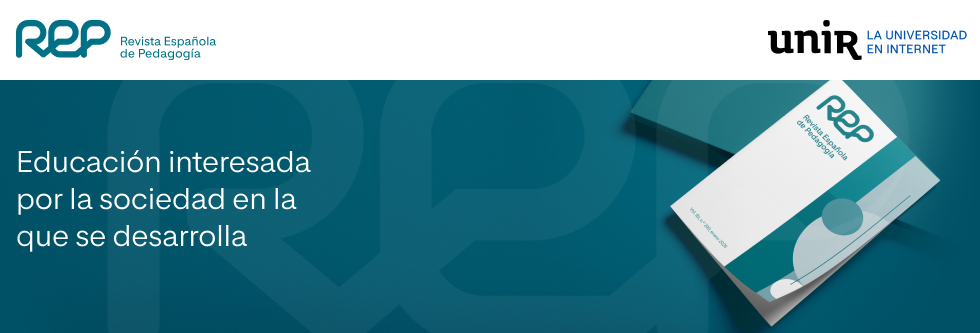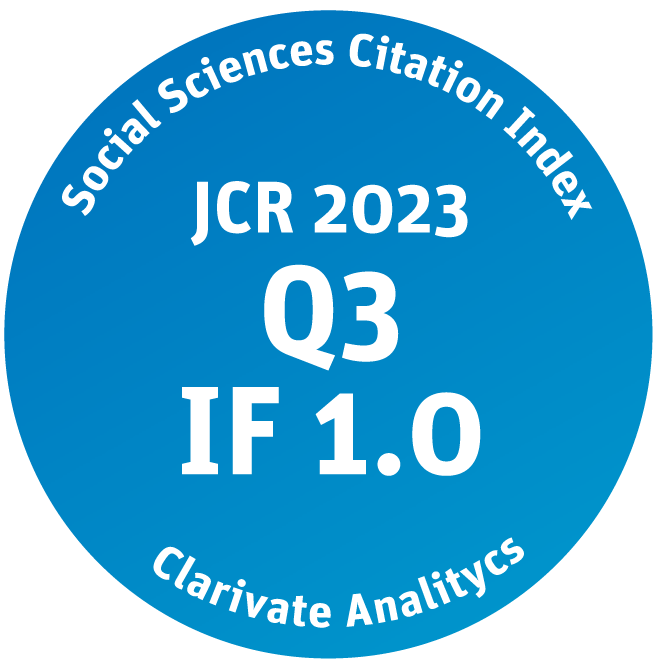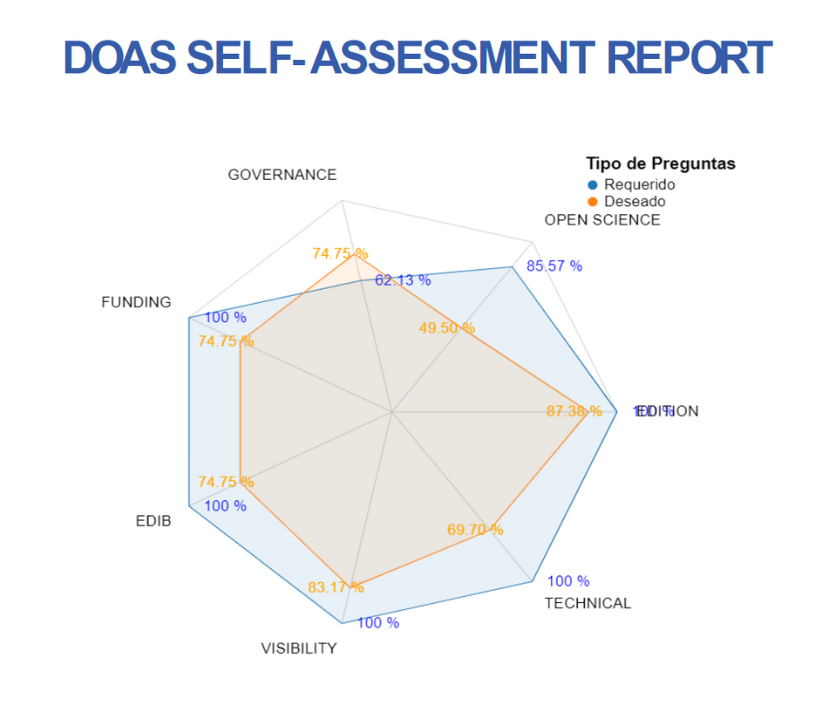Gargallo López, B. (Ed.) (2017). Enseñanza centrada en el aprendizaje y diseño por competencias en la Universidad. Fundamentación, procedimientos y evidencias de aplicación e investigación [Learning-centred teaching and designing for skills in the university: foundations, procedures, and evidence for application to research]. (Vicent Gozálvez)
Resumen
A university lecture theatre viewed from the back rows: a long blackboard at the front on a white wall, on the left a door, also white, above which hangs a large analogue clock. Anyone entering through that door will immediately find themselves facing a lectern for addressing people below, a university audience in wooden seats that are neatly arranged, rigid, and immovable. A classroom without windows, intended for a large audience as many seats are visible and more can be surmised. An aseptic or even clinical atmosphere, despite the wooden slats forming part of the chairs. An aseptic environment for didactic and possibly dull lectures. This is the provocative photograph on the cover of this book which is dedicated specifically to a new methodology and philosophy of university teaching. ,
Is a methodological renewal possible in this setting, in one of the typical lecture theatres of our higher education? Therefore, we are confronted by a major question like a challenge even before opening the book. ,
Three major sections await us. Answering this question-challenge, and other related ones that arise, means listening carefully at three points that consistently provide enough clues to support the proposal. This is what the table of contents seems to offer, a coherent statement of intent, starting with the theoretical foundations: the underlying philosophy and framework of the argument that gives meaning to and seeks meaning from the proposals for change. This is followed by a detailed outline of the methods, starting with what is intended, and then moving on to how this is to be done. On its own, this would be enough, but the editor and authors go further; they do not settle for this and include a third part with the message of «look; it really does work». This is the empirical demonstration phase, the phase of the arguments that test this new thinking. ,
What does a proposal like this entail? Something apparently as basic as asserting that the focus of attention is learning. The university world, in the areas of teaching, must shift its focus from the teacher towards the student, from teaching to learning, as the aim of all this is not for the person who teaches to shine and feel satisfaction, or at least not just this. The aim, of course, is that anyone who is there to learn will really learn. This obliges the higher education institution to focus all of its efforts and energies on this very basic objective that is so meaningful and so obviously true. ,
Learning-centred teaching goes hand in hand with competency-based learning, something that, after years of implementation of the Bologna reforms, has relatively frequently become a mere formality, no more than an exercise to please bureaucrats. What is proposed here, instead, is to go beyond reified and empty formulas to fully address a fundamental question that is still pending: this question is the great challenge that universities still face, their great lacuna, something this book aims to settle, at least in part. A large and important part, we would add. All that would remain is its dissemination and inclusion in everyday practice. ,
This task, as we said above, starts with a first section providing a theoretical grounding. This section is not especially long to tell the truth, as there are many books that have been dedicated to this, but its brevity does not make it any less important, nor has it been shortened carelessly; instead, its two chapters successfully and clearly combine and synthesise the outline of the theoretical arguments that support the student centred learning (SCL), or learning paradigm, with the aim of going beyond the limits of the teaching focussed model, or instruction paradigm. In the first chapter, Gargallo offers a historical overview of the SCL model and the relationship that has developed between this and the Bologna university reforms. The constructivist pistemology is latent here. According to which the learner actively builds meanings to truly shape knowledge, and this is done using frameworks that are created and recreated by the learner in a process in which collaboration, joint participation, and cooperation with other learners are not just a piece of trivia; they are the true source of knowledge. Learning must, therefore, be meaningful and based on participatory cooperation, both with the teacher and with other students in a community of joint interests. And so in the setting on the book’s cover, the teacher, upon entering, must not only, or not so much, «explain a topic or give a class/seminar, as play a team game» (p. 20). However, is it possible to play a team game in a setting like the one in the photograph? The question remains. ,
In this first section where the foundations are laid we are probably not in a position to respond. The truth is that the desire of the editor and the authors to seek a mooring point in experience, a «rocky ground» as the phenomenologists would put it, is already apparent from the first chapter. For example, a piece of work is mentioned that was sponsored by Education International and The European Students’ Union under the auspices of the European Commission as a solid reference for the SCL model and as a valuable tool for implementing it as well as addressing the perceptions and experiences of students in relation to this focus. ,
In an interesting footnote, the editor recognises the difficulties facing this model starting with something that is a burden in the university as we know it: the scourge of departmentalism, segregation, and hyper-specialisation that, at a practical level, often occurs as departments struggle for shares of power according to particular interests, sometimes on the margins of educating students. But this is the university we have in part and against which we must unite forces, thinking firstly of students’ education and secondly of the very aim of the university as a social institution involved in knowledge and in advancement at all levels: scientific and technical, but also humanistic, in a desire to approach ever more pressing social and global problems from an interdisciplinary focus, problems that call for and demand the joint vision (action) suggested in the book. This joint vision of the mission of the university involves examining in greater depth the controversial concept of «competences» as a crucial element in the design of the academic curriculum. M. A. Jimenez, the author of the second chapter, recognizes and faces up to the controversy regarding the competences model, but accepts it as a model that fits in with SCL in particular. ,
The second part considers in greater depth the appropriate methods or pathways for effectively implementing the SCL model. In the classroom, the change to a model that encourages meaningful learning requires the use of participatory lectures (Piedad Sahuquillo), cooperative learning (Pedro Garfella), questions as a pedagogical tool (Bernardo Gargallo), the case study method (Eloïna García and Isabel Morera), the method of carrying out projects (Cruz Pérez) which might open the door to service-learning projects, experiential learning (Noelia Martínez), learning corners and contracts (Miguel A. Jiménez and Noelia Martínez), student portfolios (Eloïna García and M. Salomé Moreno), the dialogic educational discussion (Irene Verde), learning diaries (Carmen Campos), role-playing, the simulation technique and film forums (Juan A. Giménez), concept maps (Eloïna García), and finally the use of posters (M. Salomé Moreno and Eloïna García). ,
Each of these chapters follows a similar structure and almost all of them, after describing their method and its phases, feature a reflection on the role of teachers and students and a system of evaluation linked to the method covered. To facilitate practice, each chapter includes a section dedicated to giving examples of the method in different subjects from different undergraduate or postgraduate degrees. This second part is, in effect, a methodological compendium with the aim of laying a good base for its subsequent in-depth consideration and application by those who are seriously committed to university reform in line with the SCL model, as well as stimulating the reader’s interest. ,
The third and final part, which offers empirical evidence from educational research for the operation of these methodologies is perhaps the one that makes an original contribution and includes a closing of ranks around the desirability of the SCL model. Learning focuses and strategies, attitudes towards learning, the development of the student’s competences-abilities-skills, and the evaluation of the learning environment based on specific and validated questionnaires are evaluated. ,
Having reached this point, the question arise of whether there be educational innovation in higher education in classrooms designed and built for the traditional didactic lecture. After reading this thorough and much-needed book, it follows that, insofar as far as we understand it, partly yes. Or partly no. Yes in that the reform must come from within, from inside the classes on specific subjects; it must take shape essentially in the teaching staff, in the people responsible for turning established syllabuses around and incorporating relevant new focuses, including in spaces with rigid desks that unavoidably point at the lecturer. The participatory didactic class is an excellent example of this possibility. As is the use of the question as a pedagogical technique, or many other methods that do not require a radical restructuring of the space to be applied and made effective. What is true is that besides questions of space and furnishing, the change must start now, from the base, with the dedication of the responsible academics and university management. The traditional classroom makes this difficult, but it does not make it impossible. It would be reckless to neglect our role as teachers in the university of the 21st century and wait to for all conditions, including architectural ones, to be in place before applying the model. Nonetheless, analysing these conditions, especially the architectural ones, might be a matter for another study of as much interest and importance as the one reviewed here. ,
Vicent Gozálvez ■
Citación recomendada | Recommended citation
Gozálvez, V.
(2023)
.
Gargallo López, B. (Ed.) (2017). Enseñanza centrada en el aprendizaje y diseño por competencias en la Universidad. Fundamentación, procedimientos y evidencias de aplicación e investigación [Learning-centred teaching and designing for skills in the university: foundations, procedures, and evidence for application to research]. (Vicent Gozálvez).
Revista Española de Pedagogía(1).
https://www.revistadepedagogia.org/rep/vol0/iss1/15
Licencia Creative Commons | Creative Commons License
Esta obra está bajo una licencia internacional Creative Commons Atribución-NoComercial 4.0.
This work is licensed under a Creative Commons Attribution-NonCommercial 4.0 International License









Commentarios | Comments
Gargallo López, B. (Ed.) (2017).